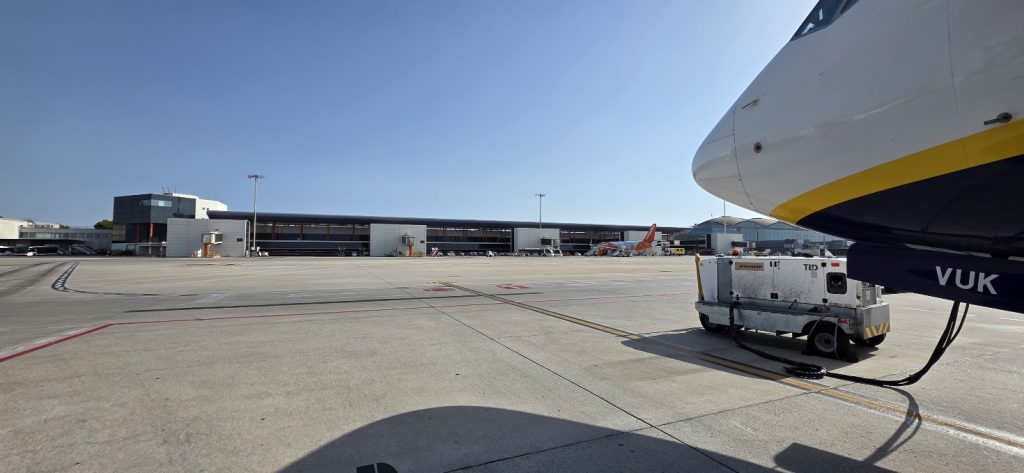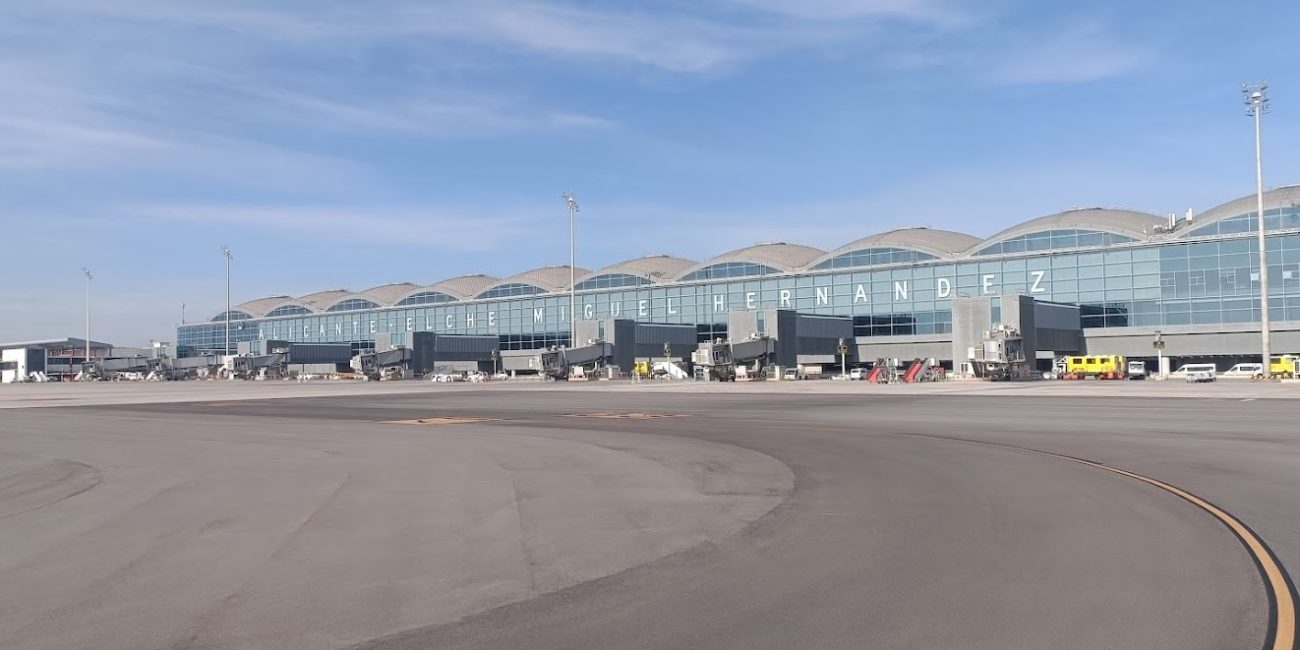Pedro Sánchez, President of the Government, presented yesterday, Thursday September 18th, the investment plan that will be included in the Third Airport Planning Document (DORA III) for the year 2027-2031. It involves a total investment of €12,888 billion, with €9,991 billion devoted to regulated investments and the remaining to non-regulated operations (connected with commercial activity). Of these, €1,154 billion will go towards initiatives at Alicante-Elche Miguel Hernández Airport, such as expanding the present terminal on the site of the previous Terminal 2 building, which is no longer in use.
The amount nearly doubles the initial figures published by Minister of Transport, Óscar Puente, who launched the development of the project with the intention of allowing the provincial airport to achieve operating capacity and process at least 26 million passengers. To date, the Miguel Hernández airport’s all-time record stands at 18,4 million, set at the end of 2024, while Puente has stated that this record is likely to be beaten by the end of 2025, with more than 20 million passengers, based on progress made thus far.
However, the investment proposal includes various improvements to the provincial airport in addition to the construction of the new passenger processing building. According to Aena sources, these improvements will cover the entire terminal area, parking, roads, and other aspects of the construction. With this bundle of projects, the current terminal area is planned to grow by over 30%. Thus, the processing facility will be reconstructed to equip the airport with a new security checkpoint using cutting-edge technology, removing the need to remove liquids or electronic devices from hand luggage. According to Aena sources, this improves clearance times while also providing improved quality.

Furthermore, the old terminal structure will be removed, and a new pier will be constructed in the area designated for non-Schengen traffic. According to Aena sources, this is a necessity stemming primarily from new border control requirements, coupled with a predominantly British international traffic, and the need to provide these passengers with a better-quality area with a broader range of services, as well as new additional boarding gates for an unspecified number.
Jetways will help these new boarding gates, allowing passengers to enter the aircraft more comfortably. The entry and parking areas will be improved as well. Furthermore, upgrades to the apron taxiways are planned, which would shorten aircraft taxiing times, and the installation of a rapid departure lane will assure equal operational capacity from both runway heads. These enhancements will not only increase capacity but also efficiency, resulting in lower emissions through shorter flight times and faster runway departures.
Pending project
However, as this publication has reported, this collection of projects, particularly the draughting of the terminal extension project, is still subject to the contracting procedure. The call for proposals began with a budget of more than 19.8 million euros, and seven international architectural companies expressed interest in taking on the contract. So far, the process has moved forward with the settlement of these bidders’ enquiries.
Aside from that, the expected activities disclosed thus far do not include plans for the construction of a second runway, which business leaders and Consell political members continue to request. For the time being, Aena has maintained that this infrastructure is unnecessary because the airport can still manage new traffic, but it has not ruled out future planning and construction if airlines want it. Similarly, no information was provided during the DORA III progress presentation about the proposed rail connection to the airport, which is part of the development of the new rail line known as the Torrellano bypass.
Investments in the provincial airport, like all those intended to be included in DORA III, are still subject to the mandatory consultation process with airlines, as stated by the Minister of Transport, Óscar Puente, during his speech at the presentation ceremony. This procedure is regulated by Law 18/2014. Likewise, they will be given to each region’s airport coordination committee, which is comprised of members from national and local authorities, as well as the economic and social sectors.
Once the consultation process is completed, the investment plan will be included into the proposed Airport Planning and Regulation Document 2027-2031 (DORA) and processed until final approval by the Council of Ministers. Puente expects this milestone to be fulfilled within a year.









No Comment! Be the first one.